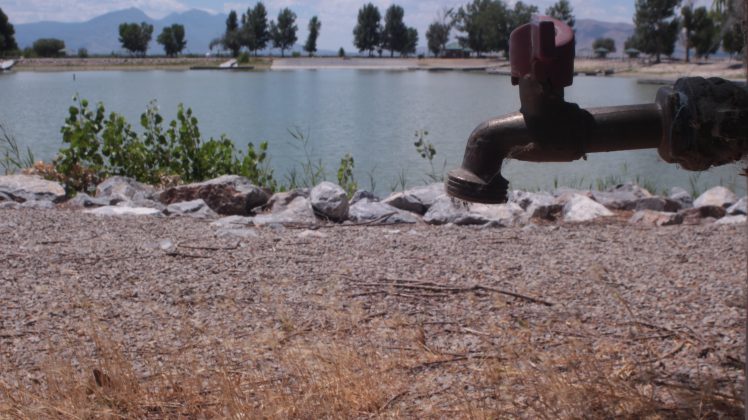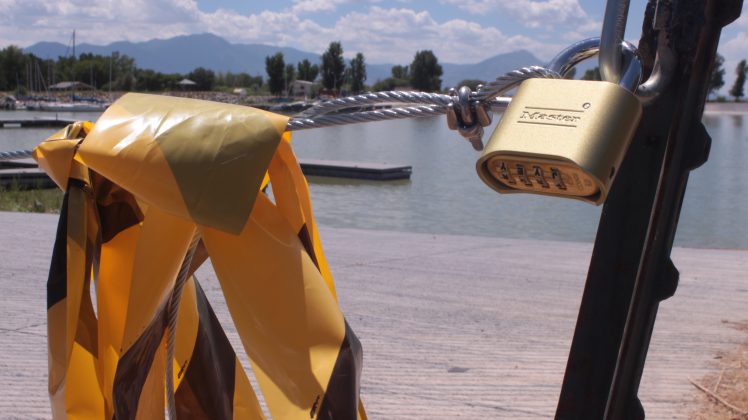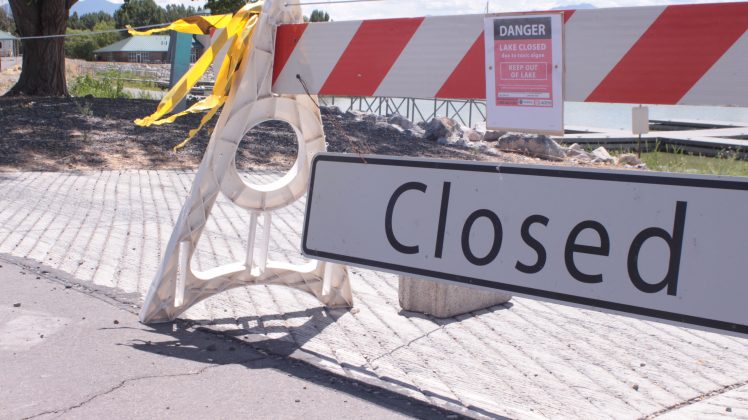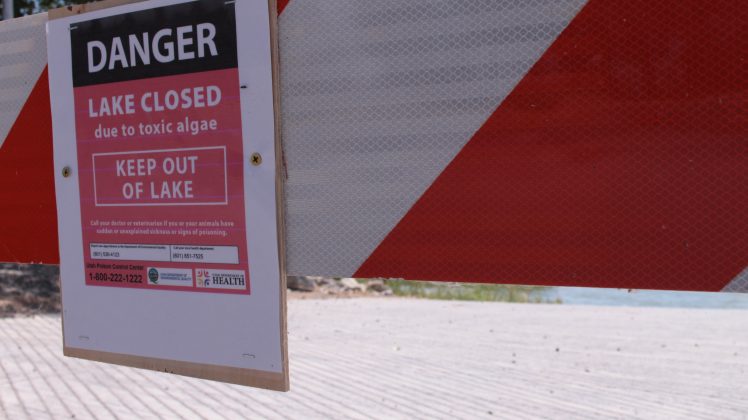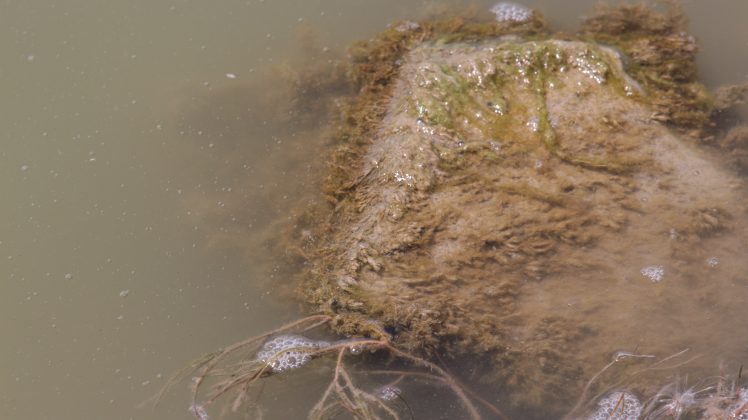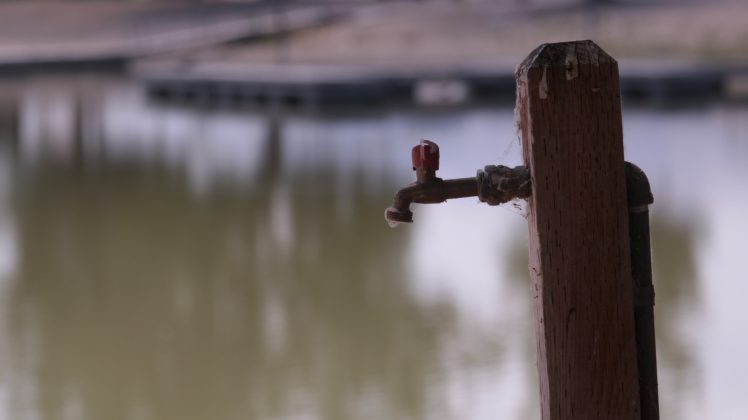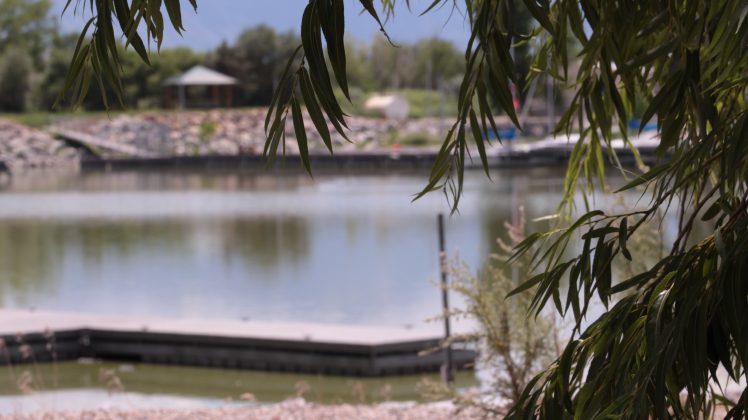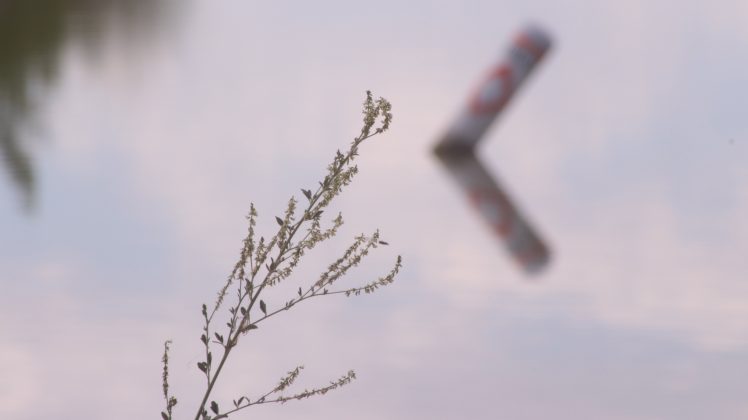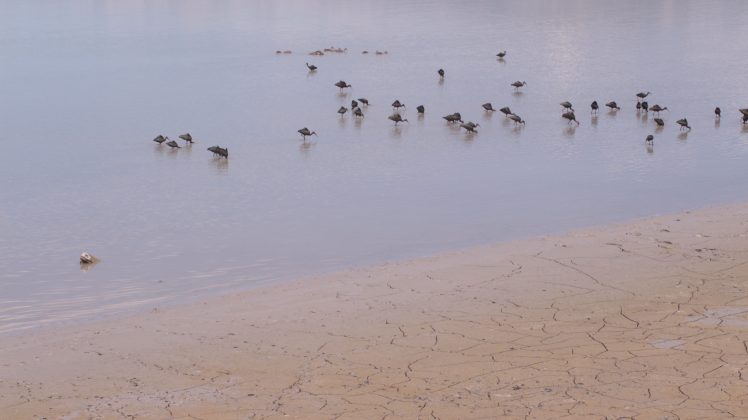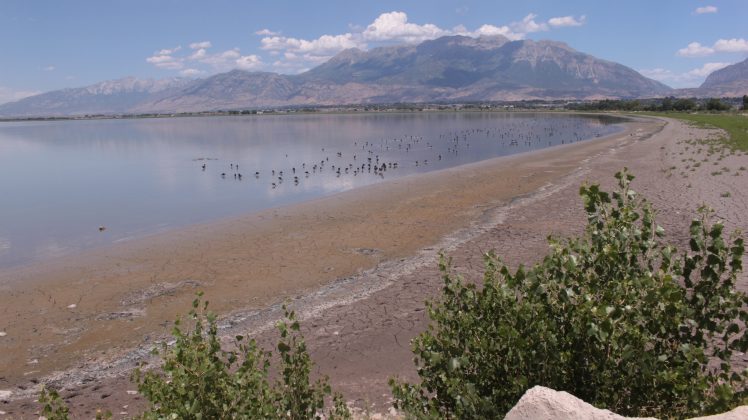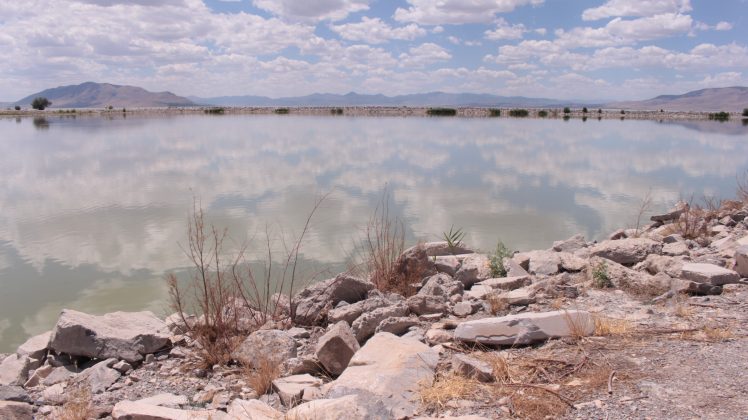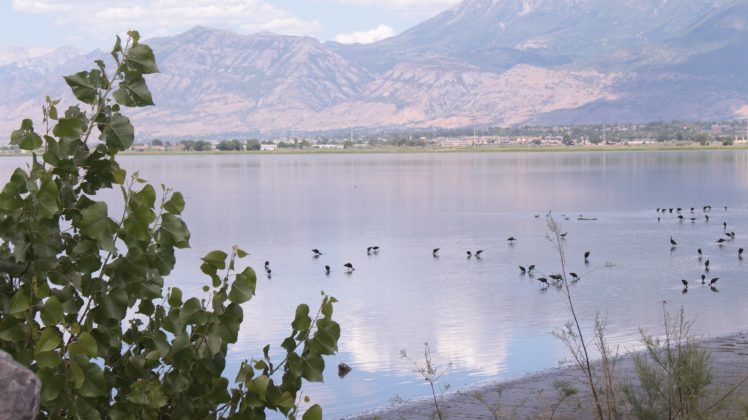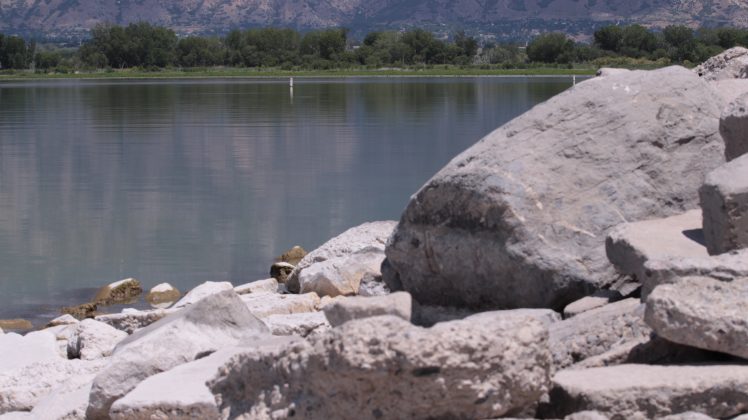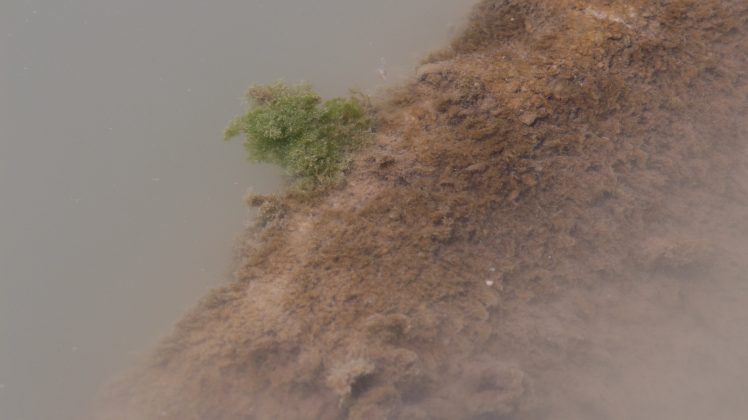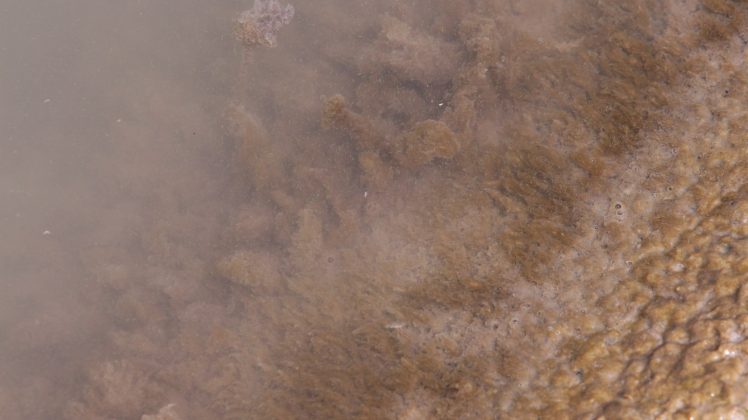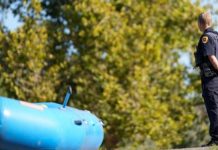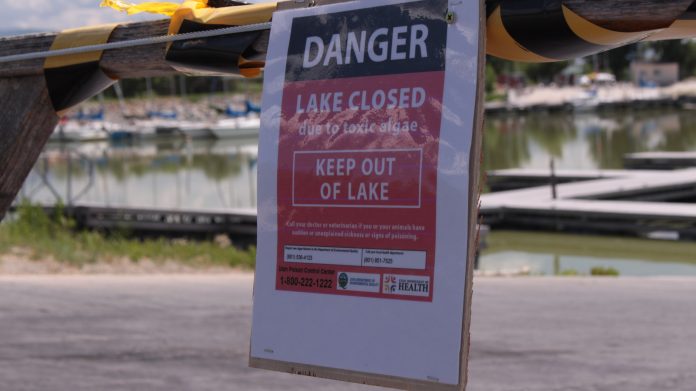
SALT LAKE CITY, Utah, July 20, 2016 (Gephardt Daily) — The City of South Jordan has found small amounts of blue-green algae in five areas sampled, but well below the critical levels reported at Utah Lake and Jordan River, officials said Wednesday.
The city said in a news release that on Monday, the City of South Jordan opted to sample bodies of water following the recent algal bloom levels in the Utah Lake and Jordan River. The city tested the pond at Mulligans Golf and Games, the three fishing ponds at Riverfront Parkway and one location at the Beckstead Canal. The results of the water samples indicated small amounts of blue-green algae exist in all the sampled areas.
The city will continue to monitor these ponds to ensure the algae doesn’t continue growing.
The public is advised to stay out of the water, keep pets out of the water and follow the Department of Environmental Quality’s recommendations on eating fish from the ponds. More information is available here.
The Utah County Health Department on Monday ordered the closure of the portion of the Jordan River that lies within its county, a decision that comes four days after the closure of Utah Lake, which feeds the river.
The cause is toxic algae, which officials believe poses a health risk to the public, pets and livestock. Utah Lake has been closed since lab results on water samples showed the concentration of algae cells in the water were three times the threshold for closing a body of water.
The city also announced Tuesday that Salt Lake City Parks and Public Lands is temporarily closing the pond at Liberty Park. The pond is partially fed by sources connected to the Jordan River water system. The pond is being flushed with alternate sources of water and will be open for regular use when this is complete. Though no visible signs of contamination have been found, the Salt Lake City Department of Public Utilities has proactively taken water samples from the pond. The pond is serviced with “mixers” which continuously stir the water, which limits the possibility of algal contamination. During this closure Salt Lake City is asking residents to avoid contact with the water and to avoid letting pets near the water.
No other water features in Liberty Park, including the Seven Canyons playground, or the sprinkler system are affected.
Multiple cities have stopped using the Jordan River as source of secondary, agricultural water in the past week.
More than 400 people have called the Utah Poison Control hotline in the past week, describing bothersome symptoms or asking for information after exposure to the toxic algal bloom that began in Utah Lake and has spread to the Jordan River and lower Little Cottonwood Creek.
“I’d say 90 percent of the cases are about actual people or animals that were exposed,” said Barbara Insley Crouch, Utah Poison Control executive director.
“Not everybody is symptomatic,” she said. “About 20 percent of the folks who contact us have symptoms. We don’t really know what is related to the water or not. We are working with public health to investigate illnesses.”
Crouch said of people reporting symptoms, most are describing some combination of nausea, vomiting, diarrhea, intestinal pain, skin rashes, and headaches, all of which were commonly reported after algal bloom exposure in previous years.
A report based on collected algae samples is expected to be released sometime Tuesday morning, said Walter Baker, Utah Division of Water Quality director.
“We will be waiting to see what it tells us,” Baker said. “Regardless of the report, there are health concerns associated with the elevated levels of algae. We have seen it (algae) as far away as 45th South. We are monitoring the remainder of the lower Jordan River, there to the Davis County Line.
“And the Department of Agriculture has indicated that if alternative sources of water are available to irrigate with and water livestock with, those ought to be used. Riverton City and Daybreak have curtailed the use of the water in their systems.”
Herriman and South Jordan joined the list Monday, ceasing use of water connected to Utah Lake for secondary uses including irrigation. None of the cities had used the water for culinary purposes.
Baker said it has not been proven whether crops exposed to toxic algae are dangerous for consumption, but since root crops, tomatoes and melons contain a lot of water, it makes sense not to take risks.
In addition, people are advised to stop fishing in the algae-filled waters, and not to eat fish caught recently in the affected areas.
The algae report results are expected to reveal the levels and varieties of cyanobateria and cyanotoxins in the water. Once the varieties of algae are known, officials will know which body systems may be at risk from exposure.
Some toxic algae causes damage to the liver, for example. Others can affect the neurological system.
Crouch said the Utah Poison Control Center is staffed around the clock, and ready to take questions. It can be reached by calling 800-222-1222.
“Most of the situations people have called about were resolved fairly quickly,” she said.
Algal blooms happen most years, but this year is more extreme than most. It can take the waters days or weeks to return to normal, safe levels.

